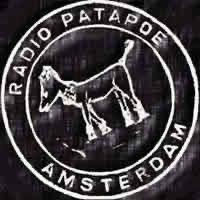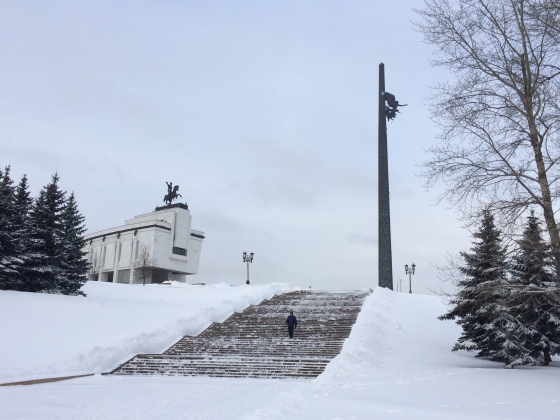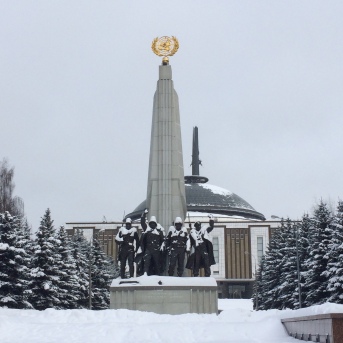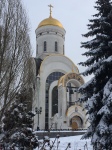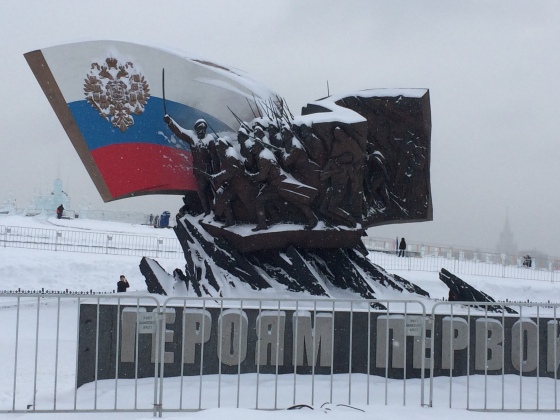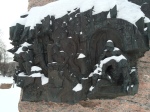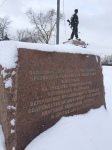
Do you feel small yet, petty human?
Snow day at Park Pobedy, Victory Park, billed as a memorial to the people who fell defending the Motherland but, frankly, rather a monument to tsarist and Soviet regimes that comfortably allowed their people to be used as human ammunition, in the name of defending, asserting or extending its own power. In winter, it is inevitably especially bleak, a chiaroscuro landscape of blowing snow and darkly skeletal trees. I’m sure in summer, with green grass and lush foliage, children playing below and sunlight above, it’s a very different place, but to be honest, I am glad I saw it in its starkness. Given the message of the place, it seemed much more fitting; softening the edges with excess humanity would be a little like furnishing Death Row with chintz curtains and bean bags, insulting brutal purpose with twee distraction.

Victory Park is on Poklonnaya Hill, literally ‘Bow Down Hill,’ the symbolic site where Moscow’s princes–who rose, after all, as the chief quislings of the Rus’–met and abased themselves to the emissaries of the Mongol Horde in early medieval times. It was on this vantage point that Napoleon waited in vain to be presented with the keys of the city. And here the Soviet leadership decided first to build a monument to victory over Napoleon, and then later a major complex commemorating the Great Patriotic War.
Completed under Yeltsin, it nonetheless has the understated touch and elegant finesse for which Soviet architectural iconography has never, ever been known. It is massive, a brutalist concrete and marble monument to an unyielding, uncaring state. And fittingly, it continues to be expanded and developed, effortlessly folded into the new, syncretic tsarist-Soviet-postmodern Putinist Russia-for-all-seasons.
There is a truly huge museum, behind an equally dramatic obelisk 141.8m high (that’s 10cm for each day of the war). There’s a glittering, onion-domed church–but also a memorial synagogue and a mosque, and the promise of a monument to the Armenians who fell in the Great Patriotic War, and even something for the Buddhists too. (I wonder if the latter reflects the influence of current Defence Minister Shoigu, a Tuvan Buddhist by birth?) There are memorials to the Republicans of the Spanish Civil War. There are tanks and guns, railway engines and planes. There are, needless to say, children’s play areas with slides and swings festooned with pictures of Russian heroes.

To the heroes of the First World War, too
And it hasn’t stopped. There is, for example, an impressive monument to the “soldier-internationalists” who died in the Soviet war in Afghanistan, with a dedication making it clear that Putin was a backer. I wonder how long before Chechnya gets its own slab and statue, historically entombing it and converting it from tragedy in living memory to glorious exploit of official history?
Don’t get me wrong, it is an extraordinary impressive site, well-done and carefully maintained. Even in the middle of winter, with very few visitors, it was being tended and watched, the snow was being dug from the paths, the rubbish cleared. But compared even with the serried ranks of austere mass graves at St. Petersburg’s Piskarevskoe cemetery, this was all about victory and national will, and not about people. The statues were all square-jawed and defiant, the iconography dwarfing the human scale. This was–and is–a state’s love poem to itself, not a celebration of the people on whose backs and lives it rested and rests.
![]()

